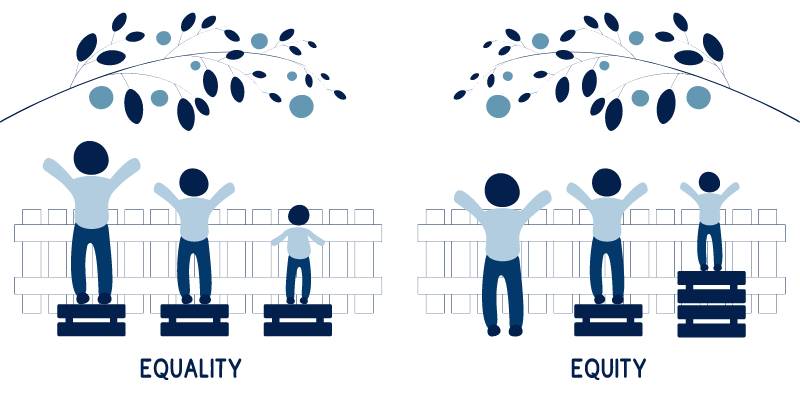As the world bounces back from the pandemic, organizations face ongoing workforce and operational challenges. The Great Resignation, continuing supply chain disruptions, and high inflation are prompting employers to take stock of their people, capabilities, and processes, building “resilience” into long-term plans.
When it comes to improving organizational resilience, research has shown that diversity, equity and inclusion (DE&I) and performance go hand in hand – not a surprise, I am sure. In fact, companies whose executive teams ranked in the top quartile for gender diversity were 25% more likely to show above-average profitability, compared with organizations in the bottom quartile. When it comes to ethnic and cultural diversity, the business case is equally compelling. A 2019 study showed top-quartile companies outperformed those in the bottom quartile by 36% in profitability. And not only does DE&I directly improve profitability–diversity promotes innovation and drives market growth.
Despite striking evidence, diversification has been slow. Data from the United Kingdom (UK) and the United States (US) shows that female representation on executive teams rose by just 5% in four years. If that seems daunting, consider that gender diversity improved by a mere 1%, globally, for the same time period. Similarly, the representation of ethnic minorities in UK and US executive teams stood at only 13%, compared to 14% globally.
We know a true (versus superficial) commitment to diversity equates to better business performance and happier employees. In fact, DE&I initiatives have come to be viewed as a basic requirement in many organizations; they can also be an “easy win,” if done right. According to Pete Brown, Co-Leader of PwC’s Global People and Organization services:
“It is bad for society and bad for business when there is a failure to ensure women have the same opportunities as men to develop their skills and careers. One of the quickest ways to strengthen the workforce is to ensure women are not overlooked – which means addressing the culture, systems and structures that can lead to women losing out.”
And don’t forget: we can’t consider the Great Resignation over. Employees across Europe and the US are still considering switching or quitting their jobs, as inflation and a cost-of-living crisis unfold.
For both current and potential employees, not feeling valued and accepted will negatively impact their perceptions and nudge them in a different direction. For example, more than 47 million American workers voluntarily quit their jobs in 2021, a move that was mirrored in Europe, albeit on a smaller scale. For instance, France witnessed a record peak in voluntary quits in the third quarter of 2021. Similarly, in the UK, the rate of churn was at an all-time high between October and December 2021. In response to shifts in the workplace, the UK’s Trades Union Congress (TUC), released a set of recommendations, includingmeasures to address equality in the workplace.
From vision and objectives, to understanding underrepresented job seekers, and designing an inclusive approach to hiring, we’ve got you covered.
Looking To Up Your DE&I Game?
How can European employers move the needle on DE&I?
Although Europe has a strong DE&I track record, how can regional employers build on past success to create more diverse, equitable, and inclusive workplaces? Given heightened attention to DE&I efforts (social, political, and otherwise), a focus on organizational resilience, and high turnover rates, now is the time for organizations to revamp their diversity efforts. Many employers are taking the necessary steps (or leaps) – don’t be left behind. Employee and customer (and societal!) expectations are looking very different in a post-pandemic world.

When it comes to recruiting, key touch points include:
- Sourcing
- Job distribution
- Job descriptions
Attracting diverse talent begins with sourcing, which is where automated job advertising solutions come in. To ensure you’re reaching a diverse (and relevant) audience, leverage channels and tools– such as programmatic recruiting solutions–which enable recruiters to engage with diverse candidates across job boards and professional platforms. Using a programmatic approach, jobs can be distributed directly from career sites or applicant tracking systems (ATS) to the right network of publishers, based on your hiring goals.
The next action item is perfecting inclusive and diverse job descriptions. This can be challenging– gender-coded language usually works on a subconscious level and changing how we communicate requires a concerted effort! Consider this: When Buffer, a software company, realized that less than 2% of its applicants for developer positions were women, their leaders consulted with DE&I experts only to find that a single word in their job descriptions discouraged women from applying. The word? “Hackers.” Because most women did not identify with the term, they were not applying. Women tend to avoid applying to positions that have bulleted requirement lists and certain terminology, for example ‘aggressive’ or ‘dominant.’
It is easy for employers to fall prey to gender-coded job descriptions. Words clearly matter when working toward a more equitable experience.

Recruiters play a key role in promoting inclusivity. Hiring managers often have a long list of qualifications and requirements in mind for a given role. Recruiters should re-evaluate the list of and highlight the must-haves. Why? Well, because men will apply to jobs for which they meet ~60% of the qualifications, while women usually apply only when they meet all of the listed requirements.
In addition to gendered language, organizations need to establish and call out benefits that underrepresented groups may relate to. We already know that flexible working, paid sick time, maternity/paternity leave, and comprehensive health insurance plans tailored for LGBTQIA+ employees can go a long way to building a more diverse and inclusive employer brand.
Conclusion
Organizations need to be bolder and far more ambitious in order to retain current employees and attract candidates in the post-pandemic world. The benefits of DE&I initiatives are clear – for both employer and employees, as well as the wider economy and society. Building a greater understanding of intersectionality, considering different personal characteristics and emotional needs, will go a long way among stakeholder groups, while also bolstering organizational resilience in the medium to long term. Here’s to a more equitable future!
Implementing new initiatives can be overwhelming. Joveo offers resources and support for those interested in diversity recruiting. Request a demo today to learn about our inclusive sourcing and recruiting solutions. And follow us on Twitter and LinkedIn, where we’re always working to help you get the most out of your recruitment advertising.














